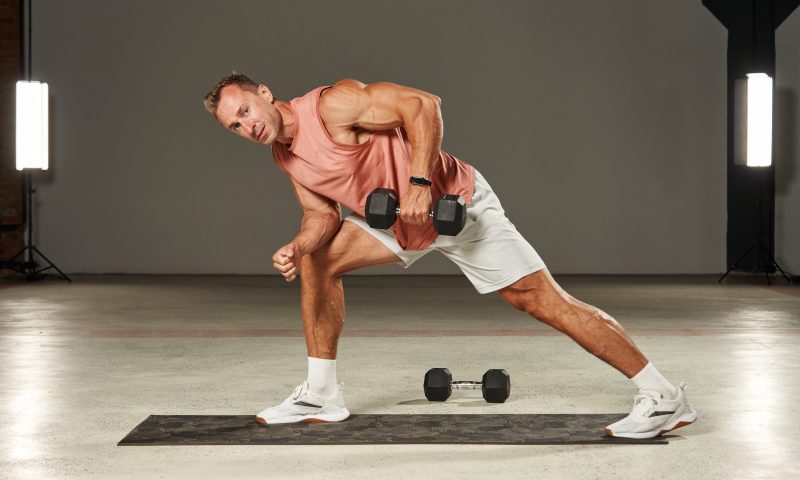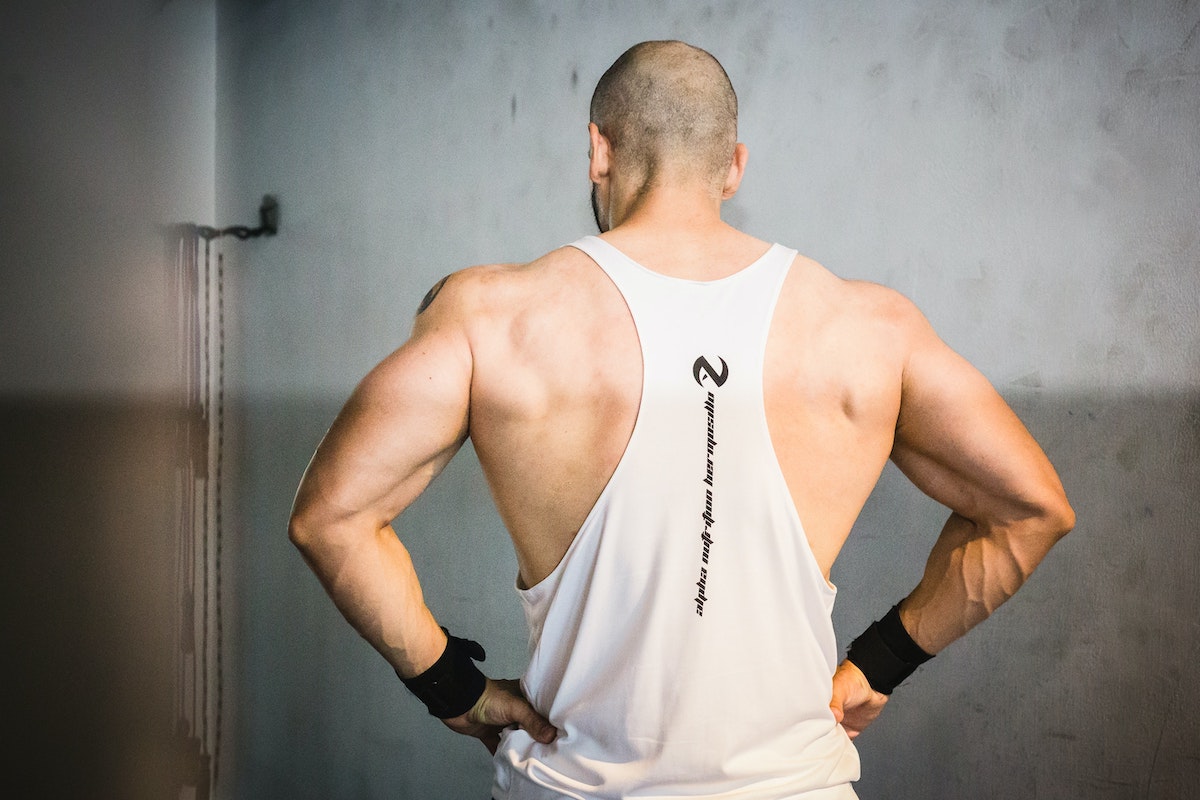
Getting a wide, thick back is a popular fitness goal, especially for men. With the growing variety of machine and exercise options, there are now more approaches to reaching this goal. Regardless of this exponential increase, back rows are still a staple in many workout programs for beginners because of their simplicity and effectiveness.
Back rows are so effective because they mimic one of the natural functions of multiple back muscles: bringing the arms towards and behind the back. However, rows may not be so simple, as many variations require technique and practice before perfection. Continue reading to explore these variations and how best to perform rows for back gains.
Do rows help you build your back?

It would be difficult to build a muscular, aesthetic back without rows. Rows complement other back exercises like lat pull-downs and pull-ups, which are effective by providing an opportunity to target specific areas of the back.
With rows, you can hit the upper and mid-back muscles, including the lats, rhomboids, and trapezius. Any row would also work as a rear delt exercise to some degree as well.
What equipment do you need for rows?

You can perform rows with the most basic gym equipment, such as dumbbells and barbells. There are many types of rows, and they all grow the back, so you can make do with what you have.
However, some types of equipment are specialized to better hit certain areas of the back or foster stability so that users can focus more on the back. A good example is a chest-supported row machine that allows you to place your chest on a pad while you row.
This way, you can focus on your back and not worry about keeping your torso up and stable during a bent-over row. To copy this exercise without a machine, you could place a bench at a 45-degree incline and rest on it while you do some dumbbell or barbell rows.
Other pieces of equipment you could use for rows are cable machines, smith machines, kettlebells, and resistance bands.
4 row variations for your routine

Cable rows
There are many popular cable exercises for getting a bigger back. Cables are well known for helping you keep constant tension on the muscle you’re targeting. Unlike free weights, where the load does not act on the targeted muscle at some points in a set, cables provide steady resistance, exerting your muscles without pause.
As a result, performing cable rows means that you get the best stretch and contraction out of every rep in your workout. Here’s how to optimally execute the exercise.
Instructions:
- Attach a handle to the cable machine and select your weight.
- Sit on the machine, place your feet on the pads, and grab the handle. If your gym doesn’t have a cable row machine, you can set up a bench against an ordinary cable machine and firmly position your feet against the bench.
- Pull the handle towards your lower abdominal area, keeping your back straight.
- Slowly return to the starting position before performing another rep.
Recommended sets and reps: 4 sets of 8-15 reps
Dumbbell rows
If you prefer free weights, dumbbell workouts are great for building your back. Dumbbell rows, in particular, are a staple back exercise you can use to target different parts of the back, including the upper and mid back and the rear delts.
You can perform the exercise with just one dumbbell or two at a time. However, using only one dumbbell (one-arm dumbbell rows) may be advantageous because it allows you to focus on one side at a time. Here’s how to do it.
Instructions:
- Place a dumbbell on the right side of a flat bench.
- Put your left knee and left hand on the bench for support. Your back should be flat and parallel to the floor.
- Reach down with your right hand and pick up the dumbbell, palm facing in.
- Lift the dumbbell towards your torso, focusing on pulling with your elbows instead of your biceps.
- Slowly lower the dumbbell back to the starting position.
- Repeat the exercise with the other hand after completing your set on the right side.
Recommended sets and reps: 3 sets of 8-12 reps for each side
Barbell rows
Barbell rows are a great exercise for loading and adding general mass to the back. However, they don’t allow for much isolation, and they require you to keep your legs and torso stable while you row.
Nonetheless, what barbell rows lack in isolation efficiency, they make up for in their ability to hit every part of the back with one simple motion. Even the American Council on Exercise agrees that barbell rows are one of the best back exercises for activating multiple back muscles. Here are some instructions for efficient barbell rowing:
Instructions:
- Place a barbell on the ground in front of you. Stand with your feet shoulder-width apart, knees slightly bent.
- Bend over and grab the bar with both hands, palms facing down, a bit wider than shoulder-width.
- Lift the barbell while keeping it close to your legs, and straighten your back so that it’s almost parallel to the floor.
- Pull the barbell towards your abdomen, keeping your elbows close to your body.
- Slowly lower the barbell back to the starting position before repeating.
Recommended sets and reps: 4 sets of 8-10 reps
Machine rows
There are many types of machine rows, including chest-supported t-bar rows and regular horizontal machine rows. Machines offer an opportunity to load the back without putting too much strain on other parts of the body.
When you compare a machine row to barbell rows, for example, you’ll find that the latter requires your hamstrings and lower back to be active in keeping your body up. In a machine variation, however, the equipment would provide a mechanism for stability, allowing you to focus on just lifting the weights and contracting your back muscles.
Here are some instructions that would apply to any row machine.
Instructions:
- Sit or stand at the rowing machine and select or add the appropriate weight.
- Place your feet on the foot pedals and grab the handles with both hands. Depending on the machine, the handles can be overhand or underhand.
- Pull the handles towards your torso, keeping your back straight and elbows close to your body.
- Slowly extend your arms back to the starting position, maintaining control throughout the movement.
Recommended sets and reps: 3 sets of 8 -12 reps
How often should you do rows?

Implementing rows in any back workout is advisable. A 2016 meta-analysis concluded that major body parts should be trained at least two times a week to maximize muscle growth. If this is your goal, then you should do rows twice a week, depending on how much time you have and how often you train.
However, if you don’t train enough times to have two back days, you don’t have to worry. You can make consistent progress training a muscle group once a week as long as your workouts are intense and productive.
Tips for maximizing back gains

- It’s best to make sure your spine is straight and not rounded.
- Pull with your elbows and keep your arms close to your sides.
- Stretch your arms fully at the start of each rep and pull until your elbows reach or pass your sides.
- Move the weight slowly and avoid jerky movements.
- Incorporate progressive overload — add more weight or do more reps over time to challenge your muscles and instigate growth.



